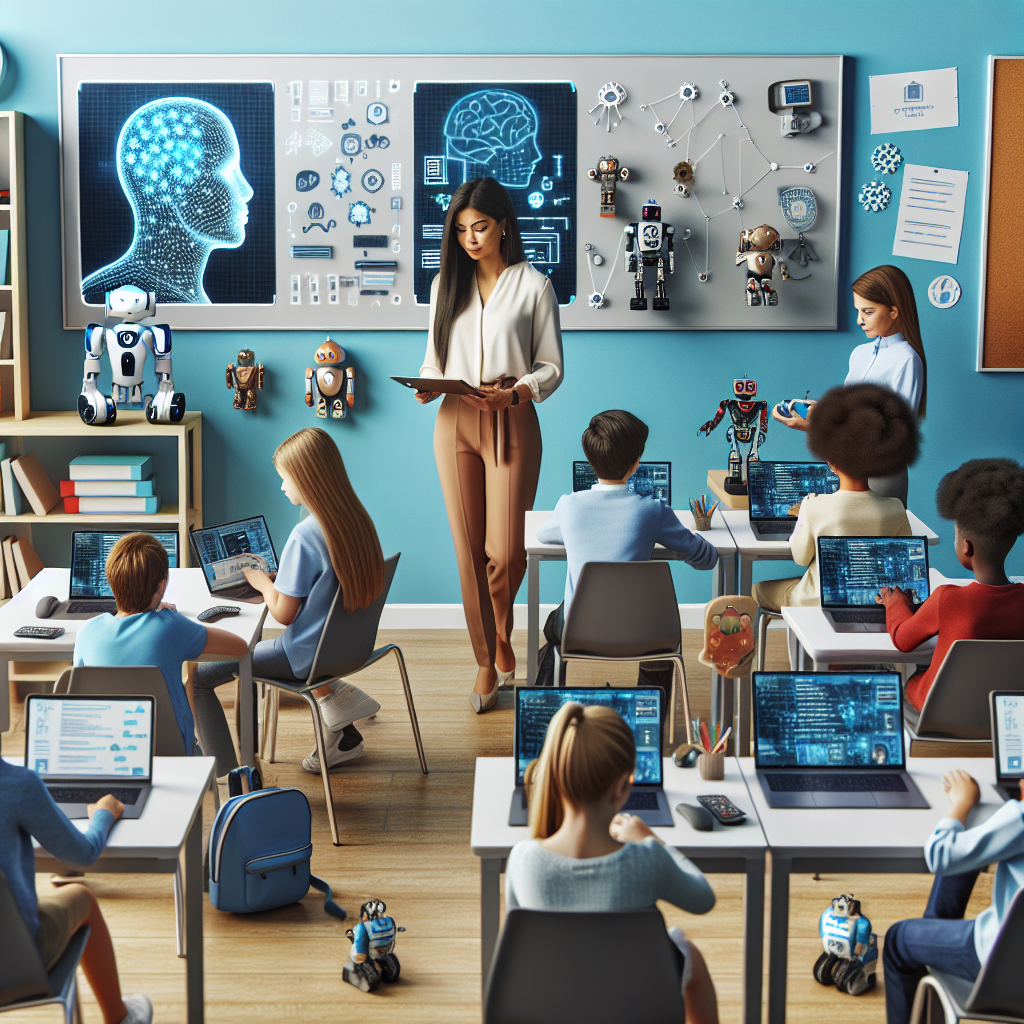Advancing Artificial Intelligence Education for American Youth
The rapid evolution of technology has changed the landscape of education in unprecedented ways. One of the most transformative advancements in recent years has been the rise of artificial intelligence (AI). Recognizing the importance of equipping the next generation with the skills necessary to thrive in an AI-driven world, the White House has taken significant steps to enhance AI education for American youth. This initiative is not only about teaching students how to use technology but also about preparing them to create, innovate, and lead in this new era.
The Vision Behind AI Education
The central premise of this initiative is to integrate artificial intelligence education into the broader curriculum for K-12 students. The goal is to ensure that every American child has access to quality education in AI and related fields. This vision aligns with several key objectives:
1. Cultivating Critical Skills
AI education aims to help students develop crucial skills, including:
– Problem-solving: Learning to approach complex problems with innovative solutions.
– Creativity: Encouraging students to think outside the box and come up with unique ideas using AI.
– Technical literacy: Familiarizing students with the tools and technologies that drive AI.
By fostering these skills, the initiative seeks to prepare students for future careers in various sectors that will increasingly rely on AI technologies.
2. Promoting Equity in Education
One of the primary goals of the White House’s initiative is to promote equity in education. It is crucial that all students, regardless of their background or location, have access to quality education in artificial intelligence. This includes:
– Increasing accessibility: Ensuring that schools in underserved areas receive the necessary resources to provide AI education.
– Diverse curriculum development: Creating materials that reflect a wide range of cultures and perspectives to engage all students.
By addressing these issues, the initiative aims to level the playing field and empower all students to succeed in an AI-driven world.
3. Encouraging Collaboration Between Sectors
To effectively implement AI education, collaboration among various stakeholders is essential. The White House initiative encourages partnerships between:
– Educational institutions: Schools, colleges, and universities play a critical role in curriculum development and teacher training.
– Private sector companies: Tech companies can provide resources, mentorship, and real-world insights to enhance AI education.
– Community organizations: Local organizations can help facilitate outreach efforts to ensure all students are reached.
This collective effort can lead to the development of robust AI education programs that meet the needs of diverse student populations.
Strategies for Implementation
To realize the vision of enhanced AI education for American youth, the initiative outlines several strategies for implementation:
1. Curriculum Development
Developing a comprehensive AI curriculum is a cornerstone of the initiative. This includes creating age-appropriate materials that:
– Introduce foundational concepts: Starting with basic principles of AI and gradually increasing complexity as students advance.
– Incorporate hands-on learning: Providing opportunities for students to experiment with AI technologies and develop their own projects.
– Focus on ethics and responsibility: Teaching students about the ethical implications of AI and the importance of responsible use.
These elements are vital in ensuring that students not only learn how to use AI technologies but also understand their impact on society.
2. Teacher Training and Professional Development
Another critical aspect of advancing AI education is equipping teachers with the necessary skills and knowledge. This involves:
– Providing training programs: Offering workshops and resources for educators to enhance their understanding of AI.
– Building a community of practice: Encouraging collaboration among teachers to share best practices and resources.
By investing in teacher training, the initiative seeks to ensure that educators are well-prepared to teach AI concepts effectively.
3. Engaging Students Through Extracurricular Activities
Extracurricular activities play a vital role in reinforcing classroom learning. The initiative encourages schools to offer:
– Robotics clubs and competitions: Providing students with opportunities to engage with AI in a fun, competitive environment.
– Hackathons and innovation challenges: Encouraging students to work in teams to develop AI solutions to real-world problems.
These activities not only enhance students’ learning experiences but also foster teamwork, creativity, and a passion for technology.
The Importance of AI Literacy
In the digital age, AI literacy is becoming as essential as reading and writing. Understanding the fundamentals of AI is crucial for students, as it empowers them to navigate a world increasingly influenced by technology. Here are some reasons why AI literacy is vital:
1. Career Opportunities
As industries continue to evolve, new career opportunities related to AI are emerging. By gaining a solid foundation in AI, students can position themselves for success in future job markets. Fields such as data science, machine learning, and AI ethics are expected to grow significantly, and having the right skills can give students a competitive edge.
2. Informed Citizenship
In an age where AI technologies are shaping policy and society, it is essential for citizens to understand the implications of these technologies. Educating students about AI empowers them to engage in meaningful discussions about its impact on their lives and communities.
3. Innovation and Entrepreneurship
AI education can inspire students to become innovators and entrepreneurs. By understanding how AI works, students can identify opportunities to create new products and services that leverage this technology. This spirit of innovation can drive economic growth and lead to transformative changes in society.
Conclusion
The White House’s initiative to advance artificial intelligence education for American youth marks a significant step towards preparing the next generation for a rapidly changing world. By focusing on curriculum development, teacher training, and student engagement, this initiative aims to cultivate a skilled workforce capable of navigating the complexities of an AI-driven society.
By ensuring that all students have access to quality AI education, we can promote equity, foster innovation, and equip future leaders with the tools they need to thrive in a technology-driven world. As we move forward, it is essential to remain committed to these efforts and ensure that every child has the opportunity to succeed in the age of artificial intelligence.



